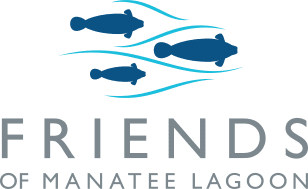The Lifeline of Manatees
The relationship between manatees and seagrass is an intricate interdependence that spans generations. Seagrass meadows serve as a sanctuary for these peaceful marine mammals, offering a vital source of sustenance and a haven for their existence. In turn, manatees play a role in shaping the health of seagrass ecosystems. Through their grazing, they help maintain the balance of seagrass beds, preventing overgrowth and fostering diversity. This harmonious bond between manatees and seagrass highlights the delicate equilibrium within marine environments and underscores the necessity of safeguarding both these magnificent creatures and their underwater habitats.
Manatees rely predominantly on seagrasses for their diet, consuming approximately 10% to 15% of their body weight in seagrasses daily. Manatees average about 1,000 pounds, meaning many will eat nearly 100 pounds of seagrass daily. Manatees graze on seagrasses using their lips. Then, like us, they use their teeth to chew the grass before swallowing it. This grazing behavior helps control algae growth that might otherwise overwhelm the seagrasses.
However, seagrass beds face significant decline across numerous regions globally. Pollution, climate change, and overfishing contribute to this decline. The reduction poses a threat not only to manatees but also to other marine life reliant on seagrass for sustenance and refuge. Safeguarding seagrass beds is becoming vital to ensure the protection of both manatees and the broader marine ecosystem.

